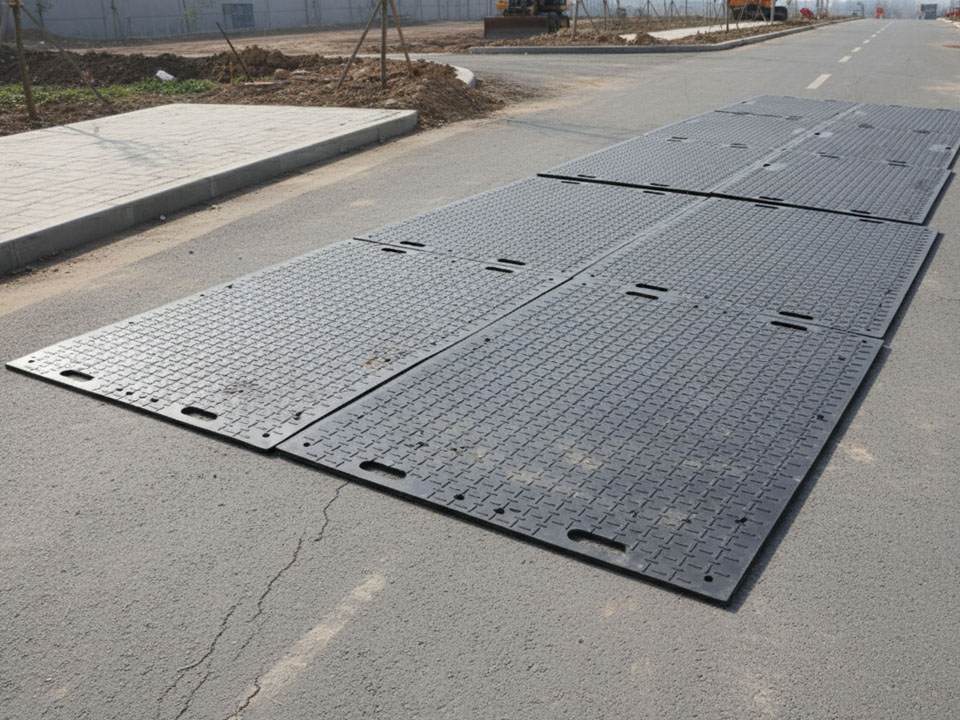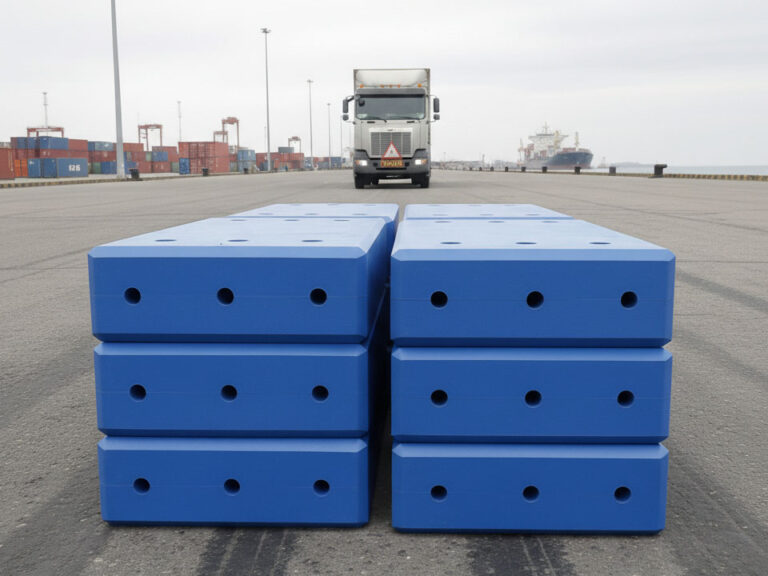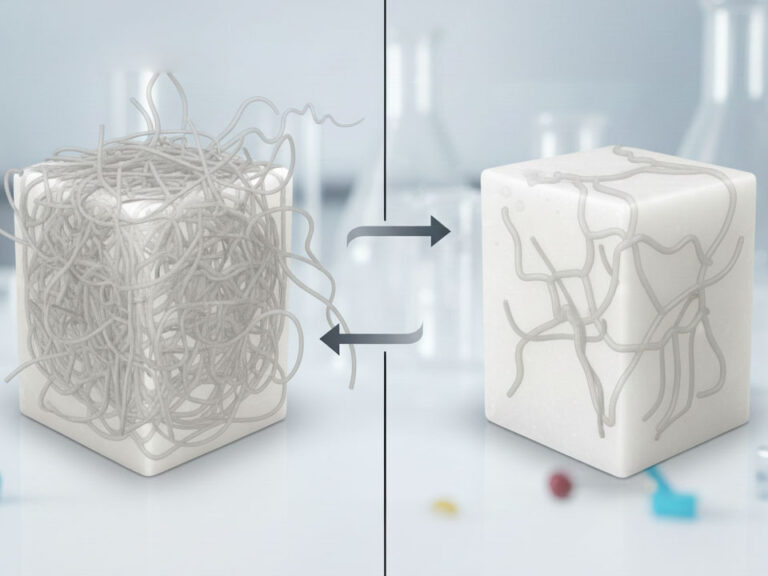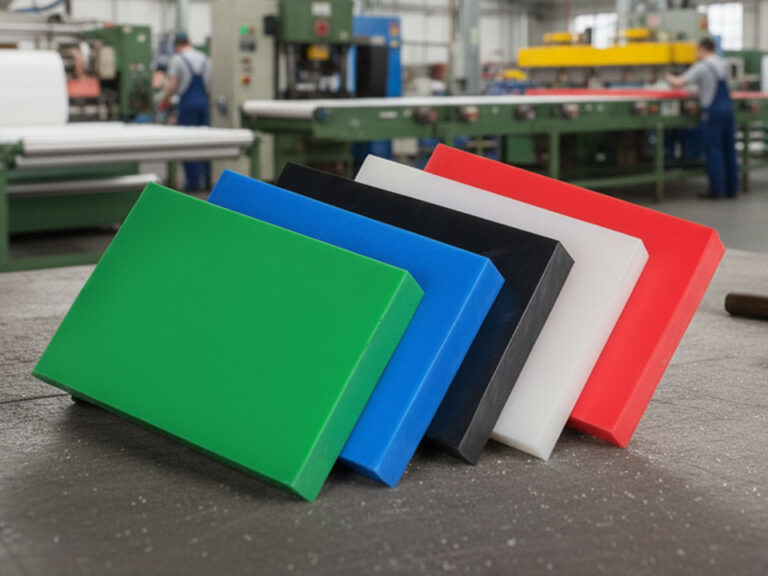-
Tian Dong Industrial Park, Decheng District Economic and Technological Development Zone, Dezhou City
How Ground Protection Mats Work
Summary
Ground protection mats are engineered surfaces designed to distribute weight evenly across various terrains, primarily used in construction, landscaping, and event management to protect the ground from damage caused by heavy machinery and foot traffic. These mats come in a variety of materials, including High-Density Polyethylene (HDPE), composite materials, rubber, plywood, and plastic, each offering unique advantages tailored to specific applications. Their notable role in enhancing safety, reducing soil erosion, and facilitating project efficiency has made them an essential tool in industries that require temporary access routes or stable working platforms on unstable or sensitive ground.
Table of Contents
The significance of ground protection mats lies in their ability to prevent soil compaction and erosion, thereby preserving environmental integrity while allowing for the safe operation of equipment. They are designed to withstand extreme conditions, including varying temperatures and exposure to chemicals, which is particularly important in construction and industrial settings. Moreover, their lightweight and reusable nature contributes to sustainable construction practices, as many mats are made from recycled materials and can be easily transported and redeployed across multiple sites.
Despite their advantages, the use of ground protection mats is not without challenges. High initial costs can be a barrier to entry for some companies, and improper installation or selection can lead to performance issues, particularly in extreme conditions or with excessive weight loads. Additionally, the ecological footprint of some mats raises concerns regarding their overall sustainability, prompting users to consider the materials and manufacturing processes involved in their production.
In summary, ground protection mats serve as vital components in various sectors, addressing both practical and environmental needs while contributing to safer and more efficient operational outcomes. Understanding their types, mechanisms of action, and the associated benefits and challenges is essential for maximizing their effectiveness in diverse applications.

Types of Ground Protection Mats
Ground protection mats are available in various materials, each offering distinct advantages and applications.
HDPE Ground Protection Mats
High-Density Polyethylene (HDPE) mats are popular for their lightweight, durable, and resistant nature. They are designed to withstand wear and tear, making them suitable for heavy machinery and foot traffic. The lightweight design allows for quick deployments, which is particularly advantageous on construction sites where ease of transport is crucial. HDPE mats also offer an environmental benefit when made from recycled materials, promoting sustainability in construction practices.
Composite Ground Protection Mats
Composite mats are crafted from a combination of materials, providing excellent strength and flexibility. These mats are ideal for heavy-duty applications due to their high load-bearing capacity, making them a reliable choice for construction and industrial projects. Their easy transport and installation further enhance their usability in various settings. Composite mats are particularly valued for their ability to protect surfaces from damage while providing a stable working platform.
Rubber Ground Protection Mats
Rubber mats are known for their excellent traction and cushioning properties, making them suitable for lighter applications and pedestrian areas. They are designed to enhance safety and comfort, especially in environments where foot traffic is prevalent. These mats provide shock absorption and noise reduction, contributing to a safer work environment. Rubber mats are ideal for events, landscaping, and areas that require a softer surface underfoot.
Plywood Ground Protection Mats
Typically constructed from hardwood, plywood mats offer strength and durability. They are often used in situations where a more robust ground protection solution is required, although they may be less versatile compared to other types of mats due to their weight and potential for slippage.
Plastic Ground Protection Mats
Plastic mats are another widely used option, renowned for their lightweight nature and easy handling. Often made from HDPE, these mats are durable and resistant to chemicals and UV exposure. Their design allows for quick setup and transport, making them suitable for temporary access routes and pathways over uneven or sensitive terrain.
By understanding the different types of ground protection mats available, users can select the most appropriate option for their specific needs, enhancing safety and operational efficiency across various projects.
Mechanism of Action
Ground protection mats function primarily by distributing weight evenly across their surface, which is critical when heavy machinery operates on soft or uneven terrain. This distribution minimizes the pressure exerted on the ground, preventing damage such as ruts or tire tracks that could otherwise harm lawns and sensitive ecosystems. The design of these mats often includes features such as a ribbed surface that enhances grip, thereby reducing the risk of slip-and-fall accidents in settings like large public gatherings.
In challenging conditions, the use of ground protection mats creates a solid working surface, allowing for the safe movement of heavy equipment and personnel across difficult terrains. These mats are engineered from durable materials, often composite or cross-linked polyethylene, enabling them to support extreme loads—up to 5000 lbs—without compromising their structural integrity. This makes them particularly effective in off-road construction, mining, and military operations where terrain can be rugged or unstable.
Furthermore, ground protection mats are designed to be reusable and easy to deploy, offering significant advantages in terms of both efficiency and cost-effectiveness for projects that require temporary access roads or flooring. By acting as a protective barrier, they also help to maintain the integrity of the underlying ground, ensuring it remains intact and usable after project completion. Thus, the mechanism of action for ground protection mats encompasses weight distribution, surface stabilization, and protection of both the ground and the equipment used on it.
Performance in Different Environmental Conditions
Ground protection mats are specifically designed to perform reliably across various environmental conditions, making them essential in construction, landscaping, and other heavy-duty applications. Their robust construction and specialized features ensure they maintain functionality and safety regardless of the challenges presented by the environment.
Weather Resistance
Weather resistance is a crucial attribute of ground protection mats, enabling them to endure a range of harsh conditions, from extreme heat and freezing temperatures to heavy rainfall. These mats are built to withstand such variations without compromising their structural integrity or performance.
UV Resistance: These mats feature UV-resistant properties that prevent degradation from prolonged sun exposure, thus maintaining both their physical strength and appearance.
Moisture Protection: Ground protection mats are engineered to resist water absorption, which helps prevent issues such as warping, swelling, or cracking that can occur due to exposure to rain or snow.
Temperature Durability: Designed to operate effectively in both extreme cold and heat, these mats can be utilized year-round across diverse climates, making them a versatile choice for various applications.
Chemical Resistance
In addition to weather resistance, ground protection mats offer significant chemical resistance. This feature is particularly important in construction settings where hazardous substances, oils, and pollutants may be present. By preventing these harmful materials from seeping into the ground and contaminating runoff water, the mats help protect local water quality and aquatic ecosystems. This functionality is vital for maintaining the cleanliness of nearby water resources and preserving the habitats of aquatic life.
Erosion and Soil Compaction
The integrity of the ground is critical for the stability of structures and the surrounding environment. Ground protection mats help mitigate issues related to soil compaction, which can hinder water and air movement through the soil, affect plant growth, and disrupt natural habitats. By providing a sturdy yet temporary surface, these mats allow machinery and workers to operate without damaging the soil’s structure, thereby supporting sustainable construction practices.
In addition to reducing soil compaction, these mats also address concerns related to erosion and runoff. They play a significant role in preserving the natural landscape by minimizing the likelihood of topsoil erosion during heavy rains or high winds, thus maintaining an ecological balance at construction sites.
Installation and Use
Proper installation and use of ground protection mats are critical for maximizing their effectiveness and ensuring safety in various applications, including construction sites and event venues. This section outlines best practices for the installation and maintenance of these mats, as well as the importance of pre-installation preparation.
Importance of Proper Installation
The correct installation of ground protection mats enhances safety by providing a stable, non-slip surface for workers and equipment, while also extending the lifespan of the mats by preventing damage during use. Furthermore, optimal performance is achieved when mats are installed correctly, as this ensures even load distribution across the surface.
Pre-Installation Preparation
Before laying down ground protection mats, conducting a thorough site assessment is essential. This involves evaluating the terrain to determine if any leveling is needed and identifying the type of soil present, such as clay, sand, or gravel. Clearing the site of any debris like rocks or sticks is crucial to avoid damaging the mats during installation. Additionally, selecting the appropriate type of mat is vital; for instance, High-Density Polyethylene (HDPE) mats are ideal for general use, while composite mats are suited for heavy-duty applications.
Installation Best Practices
Once the site is prepared, handling the mats with care is crucial to prevent damage. Heavy mats should be moved using proper equipment, such as forklifts, rather than being dragged across the ground. It is important to adhere to the manufacturer’s guidelines for handling and maintenance. For added stability, ground stakes can be employed to secure the mats in place, particularly on sloped or unstable ground.
Post-Installation Maintenance
Regular maintenance is essential for ensuring the longevity and effectiveness of ground protection mats. Daily inspections should be conducted to check for signs of wear, damage, or displacement, particularly after heavy use. Minor damages can often be repaired using patch kits, while more significant damages may necessitate professional repair services.
Cleaning is also important; mats should be washed regularly to remove dirt and debris, using a hose or pressure washer with care to prevent surface damage. After cleaning, it is crucial to ensure that the mats are completely dry before storage to avoid mold growth. Mats should be stored flat and stacked neatly in a cool, dry location away from direct sunlight to prevent warping.
By following these best practices for installation and maintenance, users can effectively extend the lifespan and enhance the performance of ground protection mats, ensuring optimal safety and efficiency on their projects.
Benefits
Ground protection mats offer numerous advantages that enhance the efficiency and sustainability of construction projects, events, and landscaping efforts.
Environmental Impact
As sustainability becomes an increasing concern across industries, ground protection mats contribute positively to eco-friendly practices. These mats are often made from recyclable materials and are designed for longevity, reducing the overall environmental footprint of construction and event management activities. By implementing an End-of-Life Recycling Program, companies can further ensure that these mats do not contribute to landfill waste once their usable life is over.
Additionally, ground protection mats help mitigate erosion and runoff at construction sites, preserving soil integrity and promoting healthier ecosystems by preventing harmful environmental impacts like sediment runoff. This not only aids in compliance with environmental regulations but also supports broader community sustainability goals.
Efficiency and Cost Savings
One of the primary benefits of using ground protection mats is their ability to reduce project timelines and costs. By minimizing the need for frequent material replacements due to damage or wear, these mats help keep budgets intact and can even facilitate projects finishing ahead of schedule. This is particularly significant as construction site managers recognize that material waste often leads to increased spending on labor, transportation, and new supplies.
Durability and Strength
Ground protection mats are designed to be robust and long-lasting. Unlike traditional solutions such as plywood or metal plating—which can suffer from slippage, require special machinery for transportation, and demand frequent replacements—ground protection mats provide a reliable, sturdy surface that enhances job site safety and operational efficiency. Many mats can last over a decade, significantly outperforming alternative materials that might last only a few months to three years.
User Safety
The use of ground protection mats enhances safety on job sites by providing stable surfaces for machinery and workers, thus reducing the risk of accidents associated with ground instability. Moreover, they protect the underlying terrain, ensuring that the natural landscape remains intact throughout the duration of the project or event, which is crucial for both ecological balance and project integrity.
Challenges and Limitations
While ground protection mats offer numerous benefits for construction and event management, there are several challenges and limitations associated with their use.
Initial Costs and Handling
One of the primary challenges is the high initial cost of purchasing ground protection mats, which can deter some companies from investing in them at the outset. Additionally, these mats often require manual handling, which can increase labor costs and complicate logistics on-site. Proper storage space is also needed to accommodate the mats when they are not in use, which can be a limitation for smaller operations.
Performance in Extreme Conditions
Ground protection mats may not perform optimally in extreme terrain or harsh environmental conditions. While some mats, like the E7M Access Mat, have demonstrated impressive durability, others can struggle with maintaining traction on slippery surfaces, posing safety risks for both personnel and equipment. Furthermore, improper installation can lead to shifting or gaps, compromising the safety and stability of the worksite, which can result in accidents or equipment damage.
Weight and Load Considerations
The effectiveness of ground protection mats is contingent upon matching their load-bearing capacity to the specific needs of a project. For instance, heavy-duty mats are recommended for construction sites with large machinery, while lighter mats may suffice for landscaping or pedestrian areas. Misjudging these requirements can lead to inadequate support and potential failure of the mats under excessive weight.
Long-Term Viability
In contrast to more traditional options like plywood, which may seem cost-effective initially, ground protection mats often offer a superior long-term solution due to their durability and resistance to rotting and damage. Plywood absorbs water, leading to increased weight and reduced lifespan, which can incur higher costs over time compared to polyethylene or composite mats that do not suffer from the same issues.
Environmental Impact
Despite their intended use in reducing environmental impact, not all mats are created equal. The materials used in some mats can have their own ecological footprints. Therefore, companies must carefully consider the sustainability of the materials when selecting mats to ensure they align with their environmental goals and practices.
Case Studies
Construction Projects
Ground protection mats have been extensively utilized in various construction projects to enhance site safety and efficiency. For instance, heavy-duty mats are deployed on construction sites to support the movement of heavy machinery and prevent ground erosion caused by equipment traffic. These mats provide a stable surface, reducing the risk of accidents and ensuring that workers can operate efficiently, even in adverse weather conditions. Their reusability also translates into cost savings for contractors, as they can be easily removed and transported to different job sites without significant wear.
Utility Installations
In utility installations, such as trenching for water, gas, or telecom lines, ground protection mats play a crucial role. They create stable access paths that allow equipment to operate effectively while protecting the surrounding soil from compaction. This is particularly beneficial in urban areas where maintaining soil integrity is critical. For example, when utility companies work in residential backyards or roadside easements, the use of mats helps minimize disruption to the landscape and facilitates safer operations.
Event Management
The event management sector has also recognized the importance of ground protection mats. For large-scale events like music festivals and trade fairs, these mats provide a stable walking surface, preventing damage to grass and other vulnerable terrains from heavy foot traffic and temporary structures. They not only enhance visitor safety by reducing trip hazards but also protect the venue’s grounds, ensuring they remain intact after the event concludes. The ribbed surface design of these mats helps counteract potential accidents, making them an essential tool for event planners.
Agricultural Operations
Agricultural projects often require extensive site access in rural areas where the ground may be unstable. Ground protection mats facilitate the construction of agricultural buildings and the creation of safe work surfaces for livestock and vehicles. This prevents the need for extensive excavation to create temporary roads, which can be costly and time-consuming. By providing a reliable surface for machinery, these mats ensure that agricultural operations can proceed smoothly, regardless of weather conditions.
Environmental Impact
The use of ground protection mats has demonstrated significant environmental benefits. By reducing soil erosion and managing silt during construction and utility work, these mats help preserve regional ecosystems and water quality. Their durability and reusability also make them a more sustainable choice compared to traditional materials, which often require frequent replacement and can lead to increased waste. In various case studies, contractors have reported a noticeable reduction in environmental impact and costs associated with material waste, highlighting the practical advantages of adopting ground protection mats.



